The last two summers, temps in the garage were getting pretty hot during the afternoon. Unfortunately the garage doors face to the west, so the hot afternoon sun shining on them really got them hot to the touch. I mean, hot enough to almost burn your palm when you place it on the inside of the door. And the doors are painted white, so it is reflecting a good bit of the solar heat already. I'd hate to see how hot they would get if that were a much darker color. The walls and ceiling are insulated pretty well, but those four big doors were pretty much negating all that when the sun was shining on them directly. Temps on some days climbed up near 110 degrees, so I wasn't real happy about that. There are side vents on the walls, but they didn't seem to help a whole lot. Opening those doors would help with some airflow, but heck, the main reason I had the garage built was to keep critters out of the cars, so leaving them open all day long really wasn't an option.
I put in a small portable air conditioner (14,000 BTUs) that did help a little, but it's pretty underpowered for a 1500 square foot room, especially with all the heat those doors were pumping into the building. So I searched around for some sort of insulation solution for the doors. What complicated the issue was that they are roll up type doors, so I didn't think I could find anything satisfactory to actually mount onto the doors to insulate them. I did try to put a curtain in front of one of the doors to try to block the sunlight from shining on the door, but that didn't seem to work very well. Plus it just looked odd with a curtain in front of the garage door.
I talked to the guy who designed the garage for me back in the Spring and he told me some of his clients have used a thin reflective covering for insulation. I didn't think it would work very well, so I just let that thought simmer on the back burner until temps started getting up there again this summer. So I really started looking around in earnest. Trust me, working on my car in that heat in the garage was really no picnic.
Anyway, I found this webpage -> http://www.radiantbarrier.com/garage-door-insulation.htm and contacted them, letting them know what I had and what I was hoping for. The guy I talked to there said that the reflective radiant barriers that they sell would do the job. It's only 1/8th inch thick and could be attached via double sided tape, and he said he had no doubts I would be pleased with the results.
Well, I realized I was talking to a salesman, so I took that all with a grain of salt. I decided to order a kit for a single door, just in case it turned out to be a big let down, so I wouldn't be out too much money on this project. When it arrived, as a test I just duct taped the barrier to one of the doors and simply checked the temperature difference with my hand. Hmm, seemed like a pretty decent drop in temperature to me. So, what the heck, it was worth a shot.
Long story short, more time than I wanted passed by before I could get around to mounting this radiant barrier stuff to one of the garage doors. Matter of fact, Connie and I did it just yesterday. I had to buy different double sided tape, as the tape that came with the package was two inches wide, and I needed 1 inch wide tape to fit in the valleys on the door. I also needed more than one roll to do the job. Talk about mind boggling, you should SEE how many different types of double sided tape is available!
http://www.findtape.com/shop/result...dKR7QodJF4A1Q&setscreen=1&width=1570&height=0
Anyway, it wasn't too tough of a job, but I think it's a two person job for sure. Fitting the insulation to form fit the humps and valleys in the door was pretty tedious, and I needed Connie to watch the insulation strip (24 inches wide) to make sure I didn't start drifting off at an angle. I guess it took a couple of hours to do, with my old bones creaking. And when it was done, the sun was shining on the front of the garage doors, so I took an infrared temperature gun and checked the inside on the covered door and compared that with the inside of one still not covered. The uncovered door was showing 113 degrees. The covered door was showing 97 degrees. Bear in mind that the air temp inside the garage at that time was 96.7 degrees, so the inside of the insulated door was pretty much showing inside air temperature. I think the difference would have been much more dramatic had the inside air temps been cooler. I thought that was pretty darn impressive. I'm guessing that once I get the other three doors covered with the insulation, that it should make a pretty dramatic difference in the garage.
Which surprised me, since it seems that stuff like this just never really works out for me. I guess I won't know how well it all holds up over time for a while yet, but hopefully it won't be something that needs to be replaced every year. Now THAT would suck. Oh yeah, the door rolls up just fine with the radiant barrier applied to the inside, so that was a worry that I had that proved to be unfounded. So it all worked out just fine, apparently. I can tell the door feels a bit heavier as it comes down faster, but that's no big deal.
Anyway, here's some pics I took afterwards....
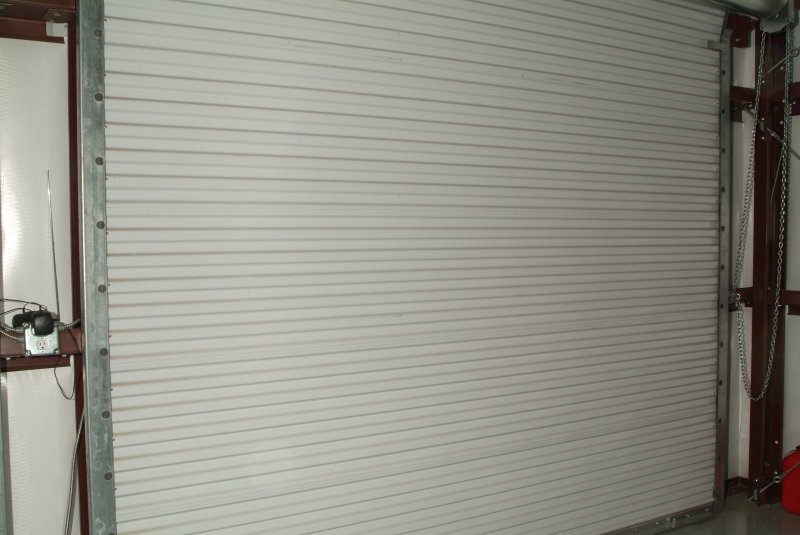
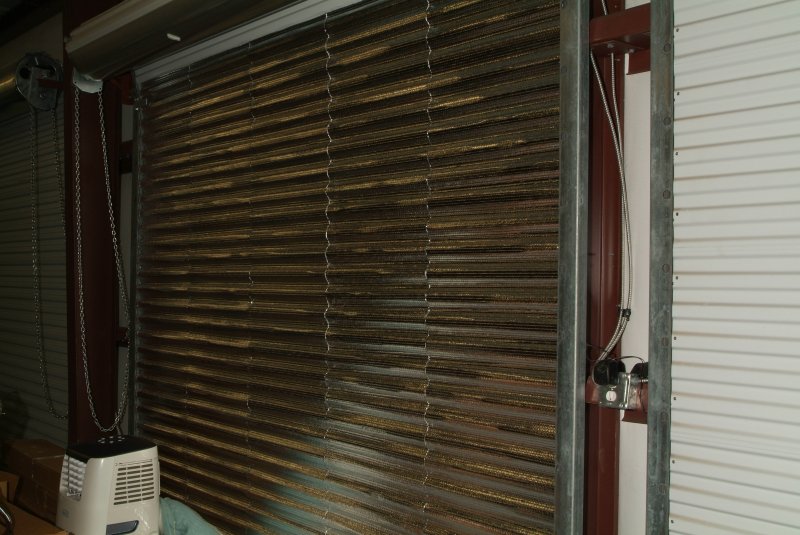
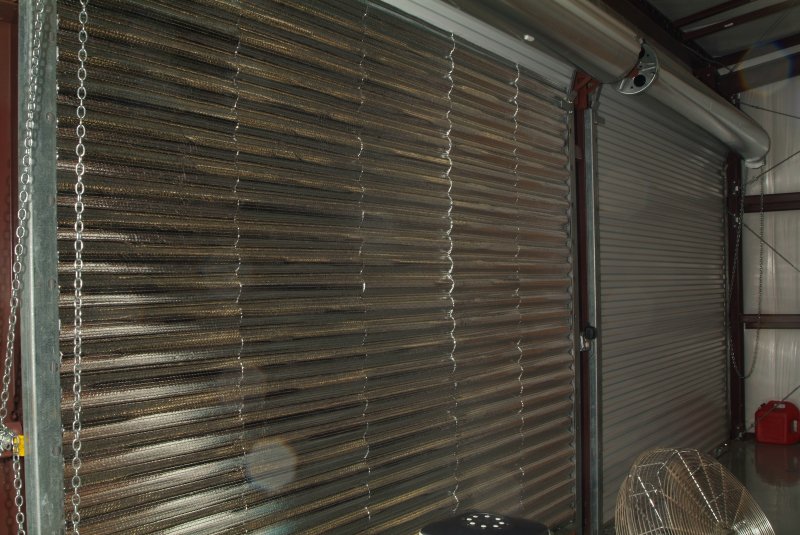
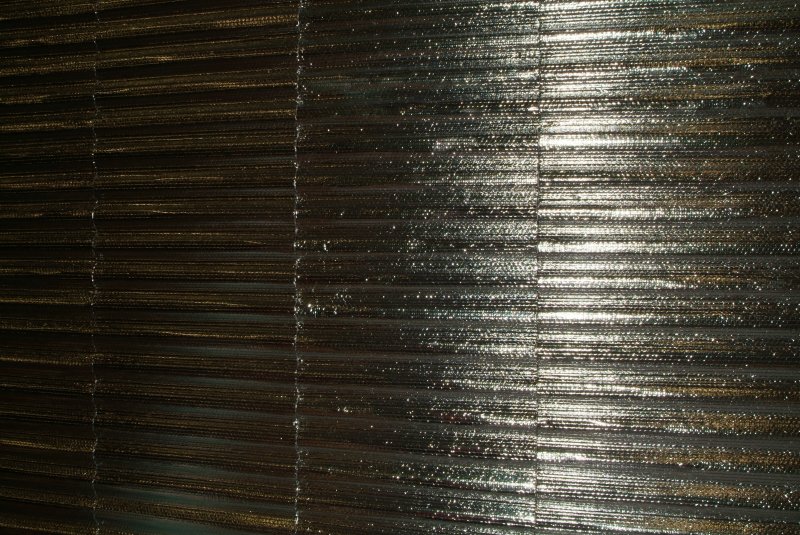
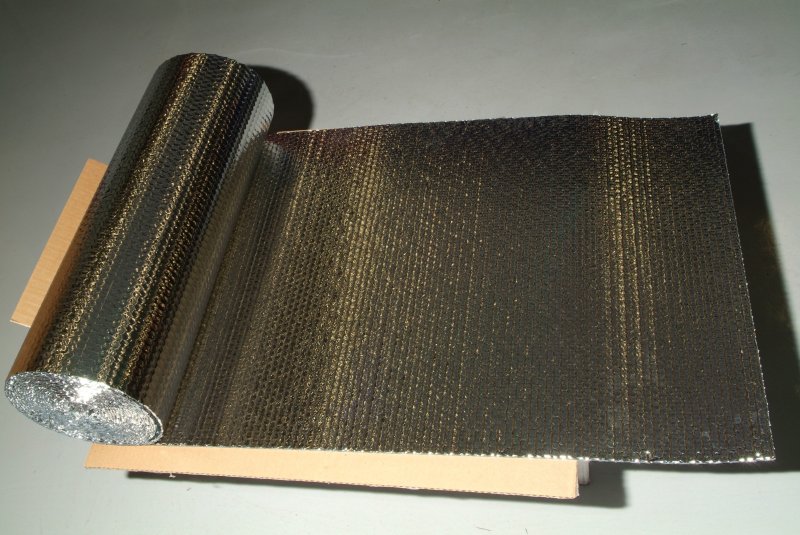
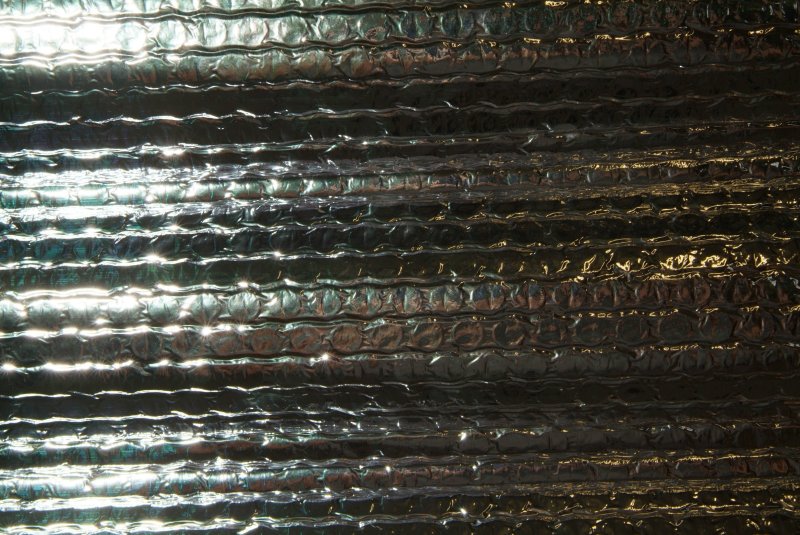
Actually now I'm looking around for other ways to use this radiant barrier stuff. I'm wondering if I can mount it underneath the carpeting in the cars to help keep down the heat from the exhaust pipes. I've got plenty left over from that single door, so I imagine with the kits for the other three, I'm going to have a LOT of this stuff laying around afterwards.
I put in a small portable air conditioner (14,000 BTUs) that did help a little, but it's pretty underpowered for a 1500 square foot room, especially with all the heat those doors were pumping into the building. So I searched around for some sort of insulation solution for the doors. What complicated the issue was that they are roll up type doors, so I didn't think I could find anything satisfactory to actually mount onto the doors to insulate them. I did try to put a curtain in front of one of the doors to try to block the sunlight from shining on the door, but that didn't seem to work very well. Plus it just looked odd with a curtain in front of the garage door.
I talked to the guy who designed the garage for me back in the Spring and he told me some of his clients have used a thin reflective covering for insulation. I didn't think it would work very well, so I just let that thought simmer on the back burner until temps started getting up there again this summer. So I really started looking around in earnest. Trust me, working on my car in that heat in the garage was really no picnic.
Anyway, I found this webpage -> http://www.radiantbarrier.com/garage-door-insulation.htm and contacted them, letting them know what I had and what I was hoping for. The guy I talked to there said that the reflective radiant barriers that they sell would do the job. It's only 1/8th inch thick and could be attached via double sided tape, and he said he had no doubts I would be pleased with the results.
Well, I realized I was talking to a salesman, so I took that all with a grain of salt. I decided to order a kit for a single door, just in case it turned out to be a big let down, so I wouldn't be out too much money on this project. When it arrived, as a test I just duct taped the barrier to one of the doors and simply checked the temperature difference with my hand. Hmm, seemed like a pretty decent drop in temperature to me. So, what the heck, it was worth a shot.
Long story short, more time than I wanted passed by before I could get around to mounting this radiant barrier stuff to one of the garage doors. Matter of fact, Connie and I did it just yesterday. I had to buy different double sided tape, as the tape that came with the package was two inches wide, and I needed 1 inch wide tape to fit in the valleys on the door. I also needed more than one roll to do the job. Talk about mind boggling, you should SEE how many different types of double sided tape is available!
http://www.findtape.com/shop/result...dKR7QodJF4A1Q&setscreen=1&width=1570&height=0
Anyway, it wasn't too tough of a job, but I think it's a two person job for sure. Fitting the insulation to form fit the humps and valleys in the door was pretty tedious, and I needed Connie to watch the insulation strip (24 inches wide) to make sure I didn't start drifting off at an angle. I guess it took a couple of hours to do, with my old bones creaking. And when it was done, the sun was shining on the front of the garage doors, so I took an infrared temperature gun and checked the inside on the covered door and compared that with the inside of one still not covered. The uncovered door was showing 113 degrees. The covered door was showing 97 degrees. Bear in mind that the air temp inside the garage at that time was 96.7 degrees, so the inside of the insulated door was pretty much showing inside air temperature. I think the difference would have been much more dramatic had the inside air temps been cooler. I thought that was pretty darn impressive. I'm guessing that once I get the other three doors covered with the insulation, that it should make a pretty dramatic difference in the garage.
Which surprised me, since it seems that stuff like this just never really works out for me. I guess I won't know how well it all holds up over time for a while yet, but hopefully it won't be something that needs to be replaced every year. Now THAT would suck. Oh yeah, the door rolls up just fine with the radiant barrier applied to the inside, so that was a worry that I had that proved to be unfounded. So it all worked out just fine, apparently. I can tell the door feels a bit heavier as it comes down faster, but that's no big deal.
Anyway, here's some pics I took afterwards....






Actually now I'm looking around for other ways to use this radiant barrier stuff. I'm wondering if I can mount it underneath the carpeting in the cars to help keep down the heat from the exhaust pipes. I've got plenty left over from that single door, so I imagine with the kits for the other three, I'm going to have a LOT of this stuff laying around afterwards.
